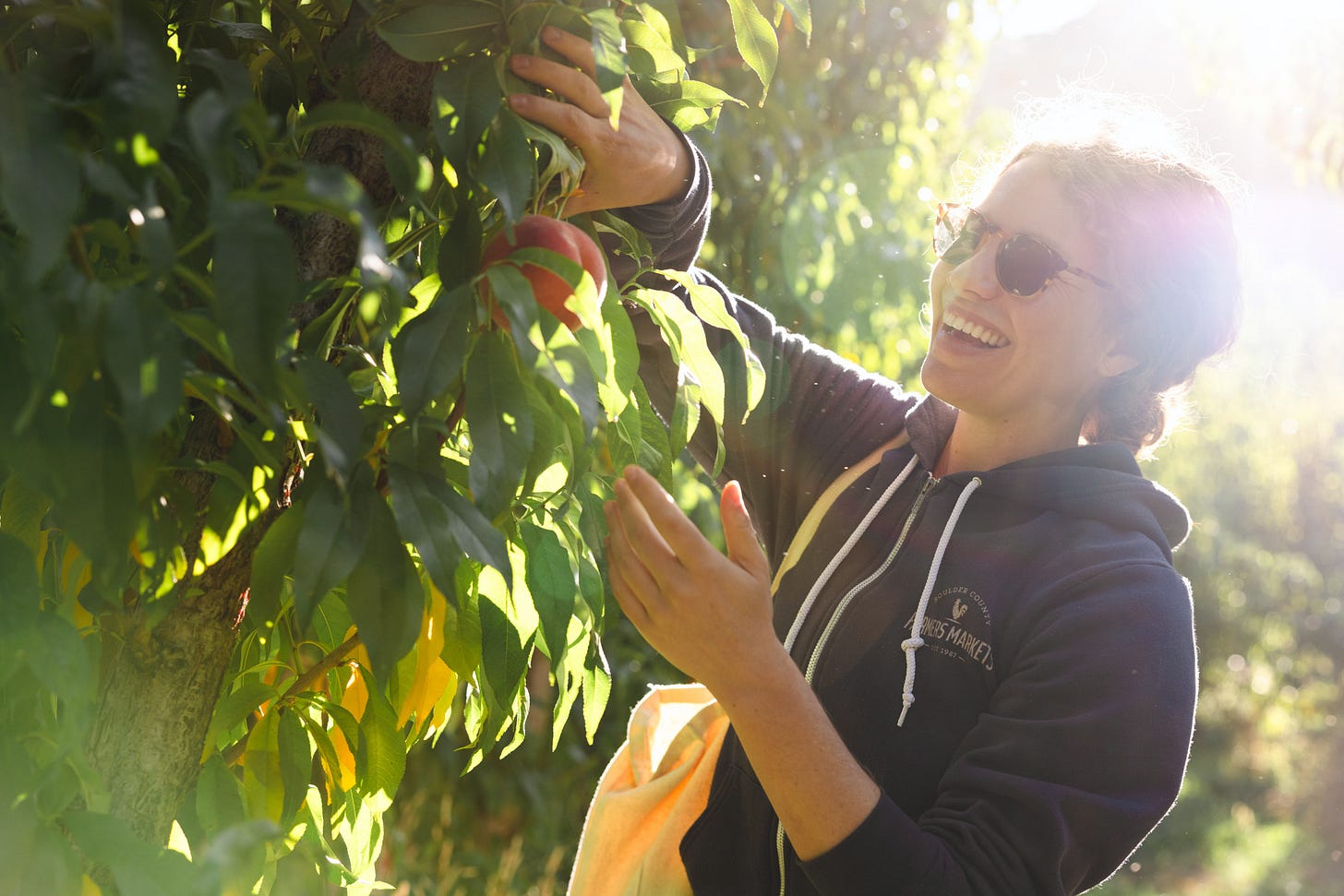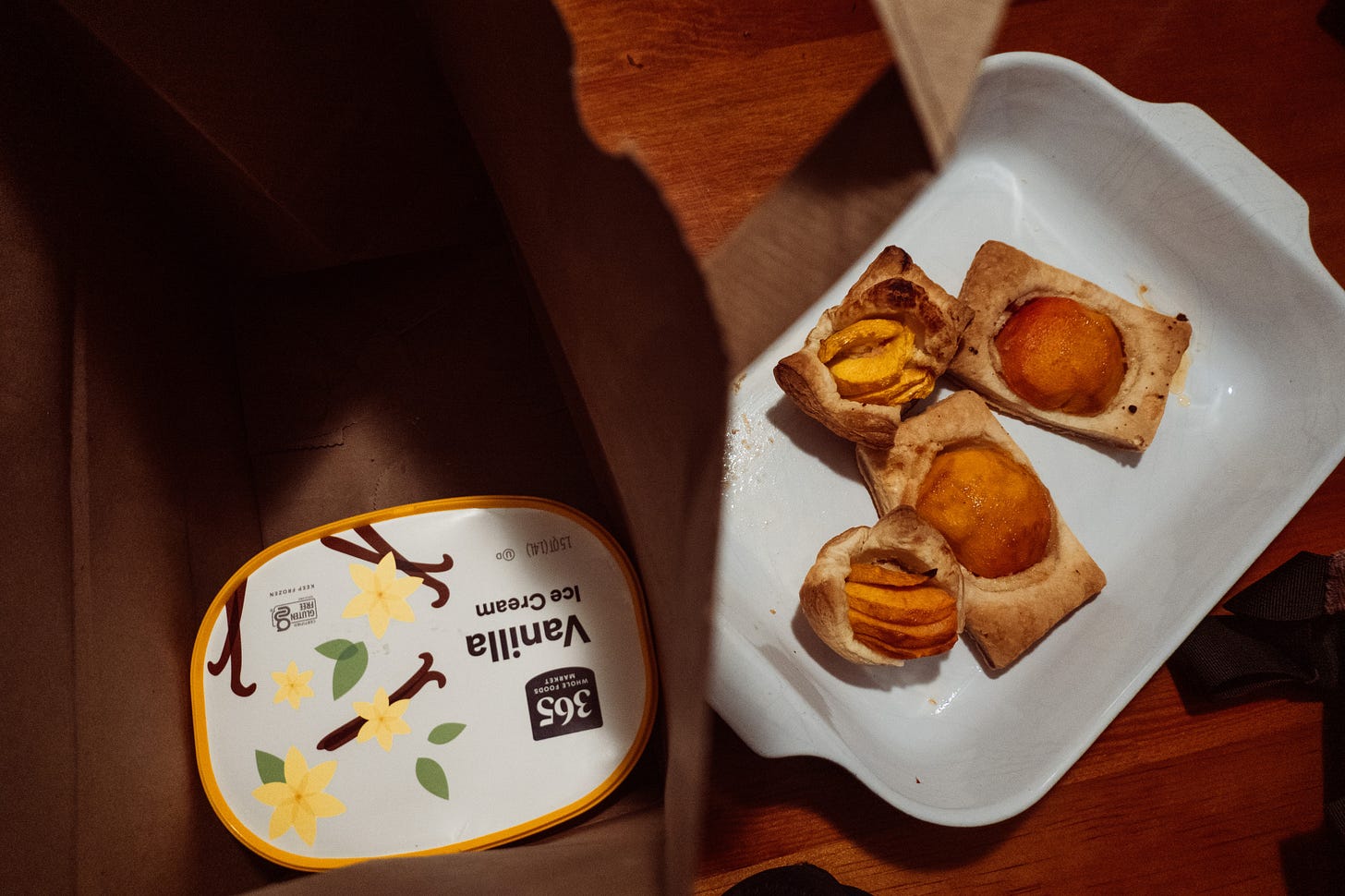This time of year in Colorado, it’s all about the peaches—Palisade peaches—grown on the Western Slope, the desert side of the state, and they are hands down the most delicious peaches you’ll ever taste (sorry, Georgia). For two months they show up at farmers’ markets / street corner pop-up tents / and throughout the grocery. Then they’re gone . . . until next year.
The other day, scrolling through the socials, I saw the late Anthony Bourdain lamenting the way we eat—the way we walk into a grocery expecting to find anything we want, whenever we want, completely disassociated from whatever might be in season—as the fluorescent lights of the modern supermarket shine on a society unbound by the seasons.
I’m going to reiterate Bourdain here—this is a bad thing.
Just because you can do something out of time doesn’t mean you should. And the bland hard peaches you buy at the grocery in January will never make the grade. But this isn’t just about the practical costs (like shipping produce up from Chile when they’re hot and we’re not), because the philosophical toll might even be greater: trading natural rhythms for artificial consistency, and a mediocre consistency at that.
There is much to be said for the ebb and flow of all things. Seasons of want, seasons of plenty—where the highs make you appreciate the lows, and the lows allow you to fully experience the highs. Or, as Kahlil Gibran wrote in The Prophet: the deeper that sorrow carves into your being, the more joy you can contain.” A level-best coasting doesn’t quite have the same effect.
Before we get too solemn here, let’s return to peaches: there is great anticipation here in Colorado for the ripening every summer. And when the fruit finally comes, people indulge—maybe even gorge—in the abundance. Peaches every way: grilled, baked, added to pastries and pies, or eaten whole. Then, to keep the vibe going, you can jar them and get that taste of summer all winter long.


(As we head into fall, this reminds me of the pumpkin-flavored bonanza soon coming our way. Though it’s been fully co-opted by the mainstream, those pumpkin flavors are doing well to keep the seasonality strong.)
Let’s talk about that homesteader preservation. It’s a bit like storing memories, isn’t it?
Canned / jarred / flash-frozen “at the peak of freshness”. . . these are pretty remarkable methods of keeping food. A kind of snapshot taking us back to whatever season the fruit or vegetable came from, more or less (not really counting limp green beans here).
While nothing will beat picking a cherry tomato off the vine and popping it right into your mouth, a really good tomato sauce might perk the tastebuds just enough to take you back, if only for a moment. Seasons might be ever-changing, but no one said you can’t make occasional off-peak return visits.
Of course, not everyone can / will / or wants to grow their own food. No doubt, the discussion of access to fresh produce and the blight of food deserts in this country is a much bigger, deeper, and more complex topic—and thankfully there are pretty cool people like Ron Finley working hard to fix it. But, suffice it to say that “from a can” is indeed where many, if not most, people get their peaches.
Am I referring to that classic song of my youth, regarding the reality of our fruit-related expectations, by The Presidents of the United States of America? Yes, I am.
As they said so eloquently:
Peaches come from a can.
They were put there by a man.
In a factory downtown.Once this current peach season is over, I’ll be eating them from a can, too—but for now I’m going to indulge until every peach is rotted and gone.
- Martin
p.s. if you’d like to take yourself back to 1996 . . .





